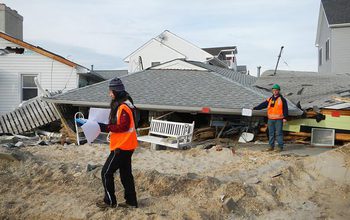Impact
Designing better warning systems for better disaster response
NSF-funded scientists worked with the National Weather Service to better communicate the risks of weather emergencies
November 7, 2017
This material is available primarily for archival purposes. Telephone numbers or other contact information may be out of date; please see current contact information at media contacts.
When a severe storm approaches, how a person responds can be a matter of life and death. Human response in the face of disaster greatly depends on how weather experts communicate the risks.
NSF-funded scientists worked with the National Oceanic and Atmospheric Administration (NOAA) and National Weather Service emergency responders to improve the communication of risks related to weather emergencies. For example, storm surge -- rather than wind speed -- is typically the deadliest and costliest force in a hurricane.
Informed by NSF’s research, NOAA now uses dynamic displays of storm surge presented visually to better communicate hurricane risks.
NSF Directorate(s):
Directorate for Social, Behavioral and Economic Sciences
Locations
Colorado
Related Awards
#0838702 Collaborative Research: Examining the Hurricane Warning System: Content, Channels, and Comprehension
Related Websites
NHC Active Tropical Cyclones: http://www.nhc.noaa.gov/cyclones/
This NSF Impact is one of thousands of research outcomes made possible by NSF that help fuel the U.S. economy, enhance national security and sustain U.S. global leadership by advancing knowledge. You can search for more NSF Impacts at https://www.nsf.gov/impacts.
Get Impacts by Email



